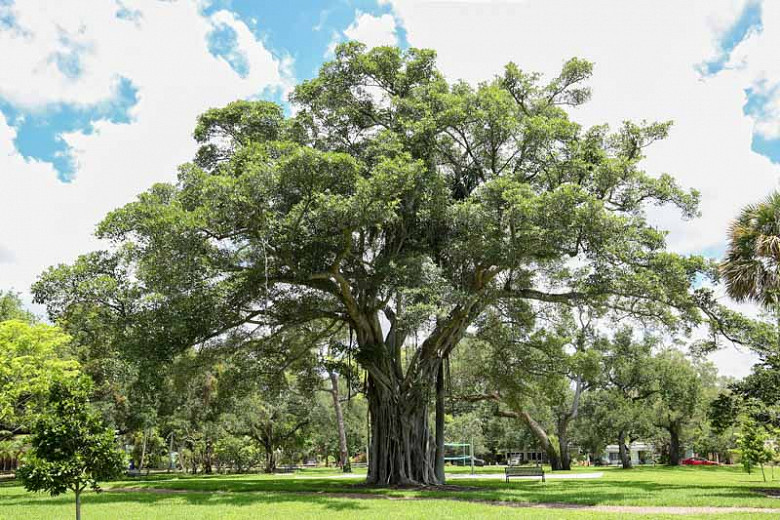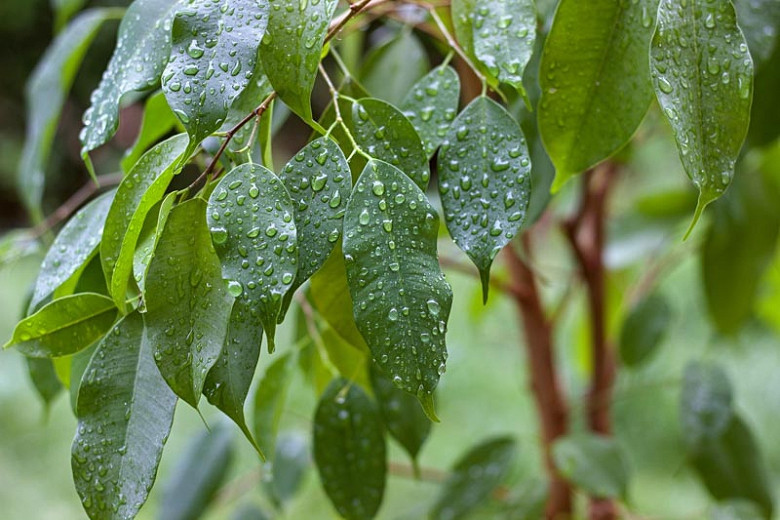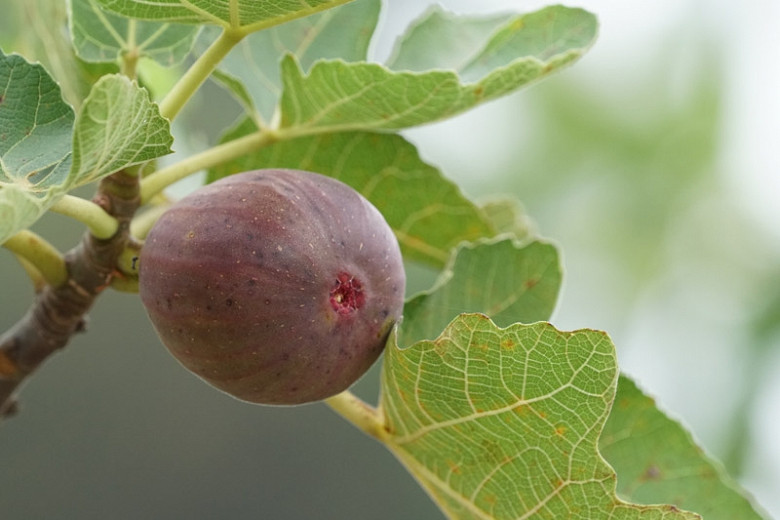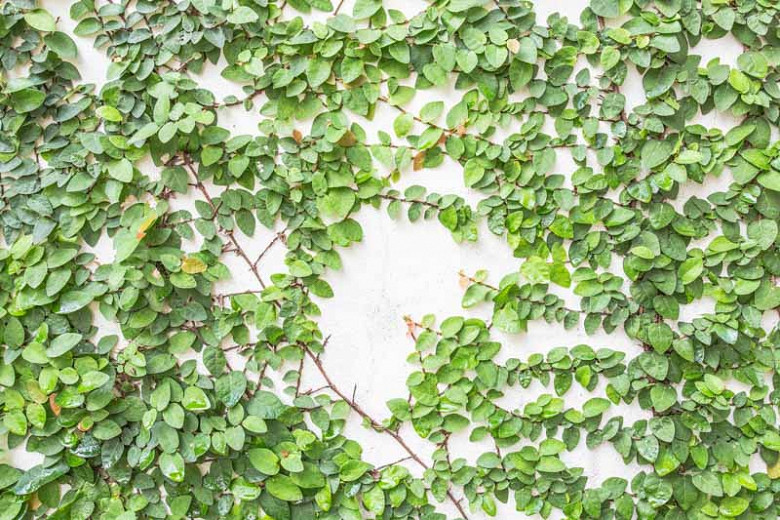Ficus citrifolia (Shortleaf Fig)
Ficus citrifolia (Shortleaf Fig) is a massive semi-evergreen tree with an attractive spreading canopy providing pleasant shade. Usually starting out as an epiphyte (growing on another tree), until its roots touch the ground, it encircles its host with large aerial roots, eventually becoming a free-standing tree in its own right. The alternate leaves, 2-4 in. long (5-10 cm), are round with sharply pointed tips, thick, shiny dark green above, and paler green beneath. This Fig tree is semi-deciduous in that there are up to three flowering and fruiting seasons a year, and many leaves are shed before the new growth begins. Blooming from spring to late summer, inconspicuous enclosed flowers are pollinated by a host-specific wasp inside the fig. They are followed by round, fleshy figs, sweet to the taste, turning from yellow to purple when ripe. A single tree may produce up to 1,000,000 fruits. Birds and other wildlife consume the figs. Native to Florida, the Caribbean, Mexico, Central America, and northern South America south to Paraguay, Shortleaf Fig provides habitat, food, and shelter for a host of tropical lifeforms including birds, mammals, reptiles, and invertebrates. This is a large specimen tree or shade tree which is not recommended for small landscapes. Undemanding, Shortleaf Fig requires less maintenance to control its aggressive aerial and surface roots than the other members of this genus. The milky sap (latex) of this tree has been used as a source of chewing gum.
- Grows up to 40-50 ft. tall (12-15 m).
- Performs best in full sun in alkaline, clay to sandy, moist to occasionally wet soils. Tolerates partial shade, but optimal growth occurs in full sun. This fig tree does not tolerate flooding by salty or brackish water, nor does it tolerate salt spray. Drought tolerant once established
- No serious disease issues. The milky sap produced by these plants can cause a skin rash or irritation.
- Thin the tree regularly to minimize damage from storms.
- Propagated by seed.
- Native to Florida, the Caribbean, Mexico, Central America, and northern South America south to Paraguay.
Requirements
| Hardiness | 10 – 11 |
|---|---|
| Plant Type | Trees |
| Plant Family | Ficus |
| Exposure | Full Sun, Partial Sun |
| Season of Interest | Spring (Early,Mid,Late)Summer (Early,Mid,Late)FallWinter |
| Height | 40' – 50' (12m – 15m) |
| Water Needs | Average |
| Maintenance | Low |
| Soil Type | Clay, Loam, Sand |
| Soil pH | Alkaline, Neutral |
| Soil Drainage | Moist but Well-Drained |
| Characteristics | Showy, Semi-Evergreen, Fruit & Berries |
| Native Plants | United States, Southeast, Florida |
| Tolerance | Drought |
| Attracts | Birds, Butterflies |






